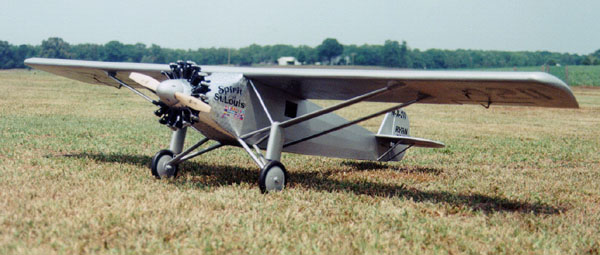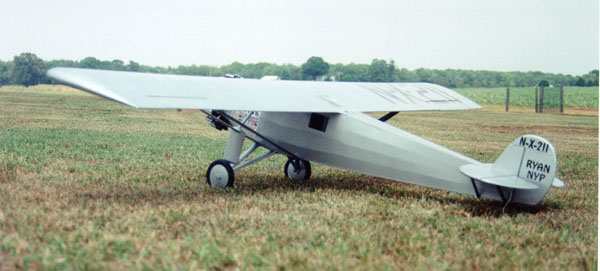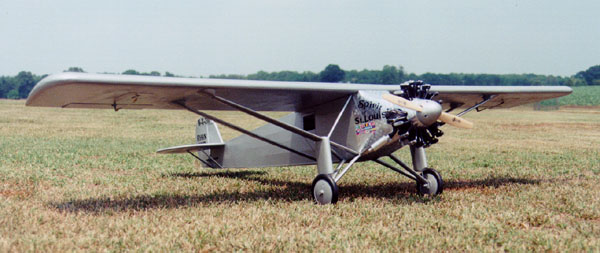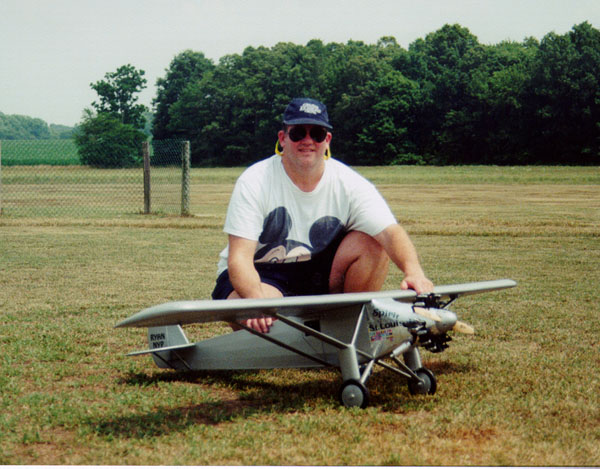

I started this kit in October of 1998 and it made its first flights in July of 1999. It was not really difficult to build, but the lack of building instructions made it more of a challenge. Also, the kit has scale rib spacing, so applying cap strips to 48 ribs took some time! It is covered with Super Coveright and painted with Pactra polyurethane. The engine cylinders are 1/6 scale Wright J5's from Williams Brothers that were cut shorter to look more scale (the model is actually closer to 1/7 scale). The wheels are also Williams Brothers. The spinner was made by cutting the front off of a DuBro 3" spinner and laminating on about 2" of balsa sheets. The spinner was then chucked in a drill and turned by hand to the correct shape (more or less). Then it was then glassed, hollowed to reduce weight, and painted. The markings were cut from vinyl by a local sign shop. I provided them with scanned images from a 3 view for the "Spirit of St. Louis" logo and the "N" numbers, and the remainder of the markings were cut from standard fonts. The flags on the nose, which were added to the original after the plane visited those countries, were made using a color printer. I found a company on the web that sells flags and they have a GIF picture of each one on their web page. I grabbed the ones I needed, put them into a single image, scaled them to the right size, and printed them on the color printer. I then cut them out and stuck them on with thinned epoxy.
The first flights were very interesting, to say the least. I had a major problem with pitch trim as the Spirit wanted to climb quite a bit under power. I trimmed this out, but the result was that when the power was cut, the plane dove. That, coupled with an extreme pitch sensitivity, made flaring for landing tricky. In addition, the plane will not turn AT ALL without application of rudder with the turn, and the rudder was much too sensitive as well.
After the first flights, I moved the CG forward 1/4 of an inch, cut down on the elevator and rudder throw, added 4 degrees of down thrust, and increased the differential in the ailerons. The Spirit can now be considered to be much more "Cub-like" in its flight characteristics, but it does take a bit more attention to fly - such is the price of a unique scale plane like this I guess. It has a dozen takeoffs and landings on it now and it is very good looking in the air.



